LCI Report: 2016 New Energy Leadership Forum
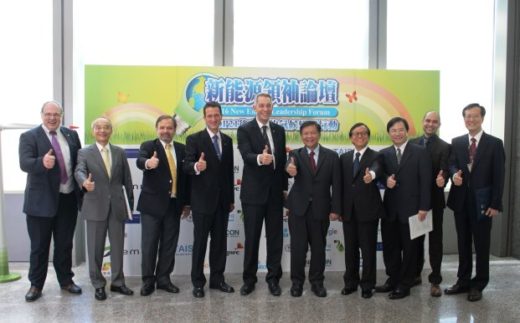
For more photos, please go to ECCT FB
On 24 August the 2016 New Energy Leadership Forum was organised by the ECCT's Low Carbon Initiative (LCI), China Petroleum Corporation (CPC) and PwC. The objective was to assist leaders from government and industry to draw up feasible action plans to put Taiwan on track to implement green energy solutions and avoid the dangerous consequences of climate change by reducing greenhouse emissions and limiting global warming to below 2°C and to meet Taiwan's international commitments to address climate change. The forum featured two sessions covering topics including new energy generation and supply, low carbon technology and energy efficiency, among other subjects.
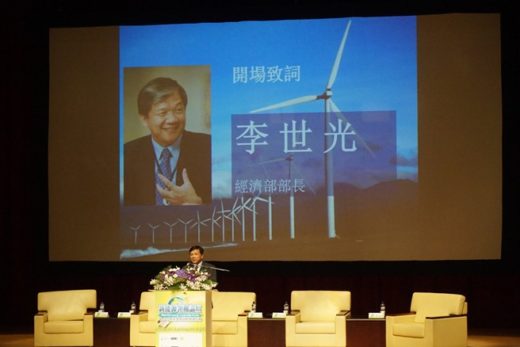
Opening speeches were made by Dr Lee Chih-kung, Minister of the Ministry of Economic Affairs (MoEA); ECCT Chairman Bernd Barkey and Chang Ray-chung, Vice President & Chief Financial Officer of CPC. A keynote speech was given by Dr Lin Chuan-neng, Director-General of Bureau of Energy (BoE), MoEA while several LCI members gave presentations on various low carbon technologies and solutions.
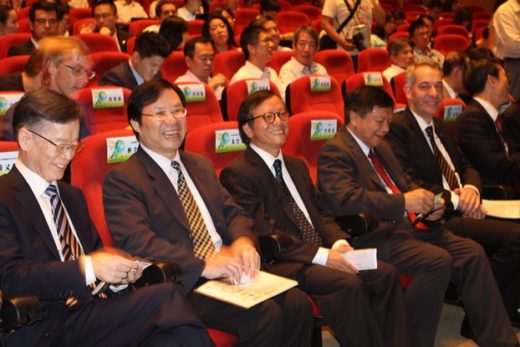
In his speech Minister Lee acknowledged that it would be challenging to meet Taiwan's ambitious carbon reduction goals...
Challenges include devising and implementing the right incentives and models to provide finance and to channel investments into green technologies. However, as European experience has shown, going green can bring environmental as well as economic benefits. For example, it can spur industry development.
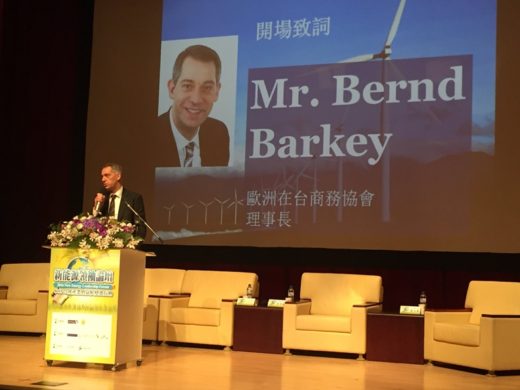
In his opening remarks ECCT Chairman Bernd Barkey said the ECCT welcomed the new government's acceptance of the COP 21 agreement and commitment to increase renewable-based electricity generation to 20% of total generation by 2025. He noted that this was a huge increase from the previous target of just 8% and brings Taiwan's goals closer than ever before to the European Union's goal of 20% by 2020 and 27% by 2030.
But reaching the carbon reduction goals will require a major effort on the part of all stakeholders – government, energy providers, industry and the general public, he said. To achieve these goals, the government needs a master plan to ensure energy security and reduce emissions at the same time. Since the generation of electricity, industry and transportation together account for the largest share of carbon emissions, it is clear that action in these areas is necessary, he added.
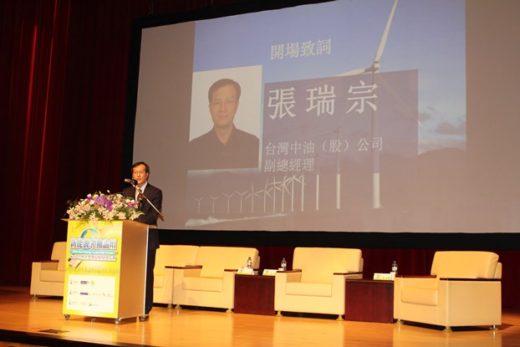
In his remarks Chang Ray-Chung noted that CPC has been investing to make its petrol stations environmentally-friendly by equipping them with solar panels to provide electricity and emphasizing water conservation and efficient resource utilization. In future, in line with the shift from fossil fuels to electric vehicles, CPC's petrol stations will be adapted to provide the services needed for hybrid vehicles and those running on alternative fuels, such as battery recharging and battery exchange.
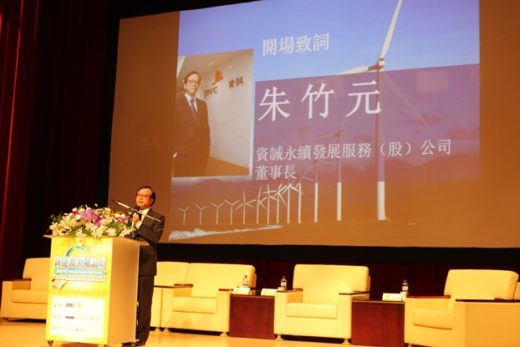
The PwC President Daniel Chu pointed out the importance of green finance to boosting new energy industries and low carbon development in Taiwan. Mr. Chu also stressed on PwC's determination of collaborating with local and international stakeholders on building green financing system in Taiwan.
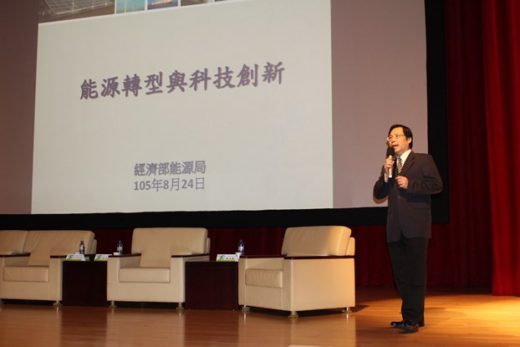
Keynote speech
Speaker: Dr Lin Chuan-neng, Director-General, Bureau of Energy (BoE), MoEA
BoE Director-General Lin gave an overview of the BoE's development vision and transformation of energy policy in Taiwan. The BoE's priorities are to secure stable sources of energy, provide a stable supply of electricity, promote clean energy development, improve energy efficiency, speed up the roll-out of smart meters and improve energy management. Achieving these goals will necessitate reform of existing laws, such as proposed amendments to electricity legislation.
In terms of green energy, targets have been raised considerably from 8% of capacity to 20% of capacity by 2025, including 20 gigawatts (GW) of solar capacity. Initial targets for wind energy are much more modest – only around 1.2GW by 2020 and around 5GW by 2025, including onshore and offshore wind.
The promotion and roll-out of smart metres is aimed at getting consumers to reduce energy and shift some consumption to off-peak hours.
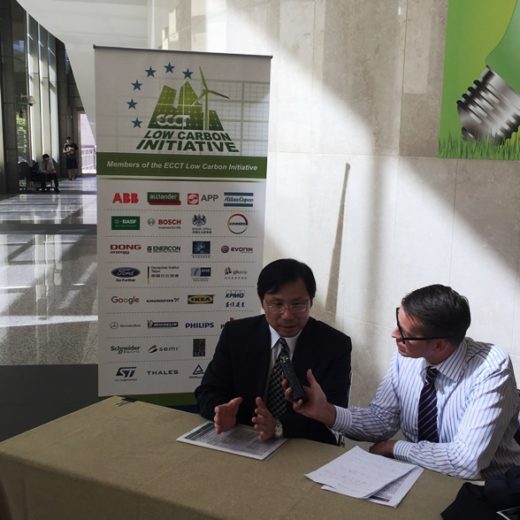
Electricity regulatory reform policies are aimed at opening the electricity market to competition, prompting the industry to enhance operational efficiency, technological innovation while maintaining power service quality. Reforms aim to allow users to choose their source of supply. The government will also support research to find and commercialise new energy breakthroughs.
2016 New Energy Leadership Forum speaker presentation slides download
(invalid on 30th Sept. 2016)
BOE DG Lin 林全能/經濟部能源局局長
http://www.pwc.tw/zh/services/csr-consulting/events/assets/slide-160824-05.pdf
Mr. Dereck Devlin /阿特拉斯科普柯(股)公司總經理
http://www.pwc.tw/zh/services/csr-consulting/events/assets/slide-160824-01.pdf
Mr. Bart Linssen /德商風電能源技術台灣分公司主席
http://www.pwc.tw/zh/services/csr-consulting/events/assets/slide-160824-06.pdf
Schneider Electric 龔柏丞/施耐德電機(股)公司配電事業部總經理
http://www.pwc.tw/zh/services/csr-consulting/events/assets/slide-160824-04.pdf
Session I: New energy development and solutions
Moderator: Dr Eugene Chien, Chairman, Taiwan Institute for Sustainable Energy (TAISE)
Topic: New energy development and solutions
Speaker: Huang Tung-li, Director, Green Tech Research Institute, CPC
Huang talked about some of CPC's measures to improve energy efficiency in its operations, such as the refinery process and at petrol stations. She also introduced some of her unit's research into alternative fuels, such as biofuels.
Topic: What does it mean to be 100% powered by renewable energy?
Speaker: Marsden Hanna, Global Energy Policy and Strategy, Google
Hanna pointed out that Google has been committed to making its operations carbon neutral and getting 100% of its electricity from renewable sources since 2007, a difficult target given the fact that its data centres, in particular, are very energy intensive. Nevertheless, according to Hanna, the targets have already been reached in many countries on three continents. The company wants to achieve the same goal for Taiwan, which is home to one its data centres.
Hanna pointed out that Google is just one of growing number of multinational companies with targets to become carbon neutral and that the ambitious targets of these companies is helping to drive and accelerate the roll-out of renewable energy capacity in many countries. He listed 60 companies which all have the goal of getting 100% of their energy needs met by renewables.
Achieving this goal is not as simple of connecting a cable to wind turbines or solar panels. The two fundamental challenges with current technology are that renewables are intermittent, which falls short of the need for stable baseload power for critical systems while it is not possible with current systems to direct electricity precisely from one part of the grid to another. While the intermittent supply problem could be solved with batteries, current battery technology is neither cost-effective nor available in sufficient quantities for the scale needed.
Nevertheless renewables offer attractive advantages. After upfront costs, wind and solar have no further costs (unless maintenance is factored in). This provides future price visibility, which is not possible with fossil fuels. However, scale is critical. Large-scale renewable capacity can often only be provided by utilities. Moreover, renewable power plants need to be located where conditions (for example sun and wind for solar and wind energy) are best, which is not necessarily the ideal location for companies to establish their facilities. Companies like Google, which need constant and reliable power, still need to be connected to the grid.
According to Hanna, Google wants additional renewable projects to be added to the grid to meet its energy requirements. For this reason it does not want to purchase existing capacity. Hanna pointed out that for Google it does not matter if at any given time their facilities are actually using "green electrons" (electricity produced by renewable sources) as long as the total quantity of renewable electricity purchased over time is equal to its total consumption. Taiwan currently lacks an efficient and workable model for renewable energy purchasing that would make this possible.
Topic: Time to build a green highway
Speaker: Bart Linssen, General Manager, Enercon Taiwan Branch
The cost of onshore wind energy has fallen significantly in recent years and is now comparable to fossil fuel. Moreover, the cost of wind energy is very stable and not subject to the geopolitical risk factors associated with oil. Given greater scale and efficiency, newer turbines are even cheaper than their predecessors. Since 1984 the cost of wind energy has fallen by about 75%. Another advantage of wind turbines is that they need far less space than photovoltaic (PV or solar) panels to produce the same amount of electricity.
According to Linssen, Taiwan has the potential space available to install at least 10 gigawatts (GW) of capacity at a cost very similar to coal-fired power plants. An added bonus of taking this route is that 1,000 jobs would be created just for the installation. After initial installations wind turbines create further maintenance jobs (for technicians). Based on his company's experience, running 200 turbines employs 300 people.
An important factor for success in renewable energy development is to involve the local community. Linssen cited some successful examples in Europe that Taiwan would do well to follow. He said that almost half of renewable projects in Europe involve communities, which have an incentive to invest in the projects thanks to a higher feed-in tariff. Taiwan's main problem is the permit process, which can take from 5-10 years. For example, Taiwan requires a general Environmental Impact Assessment (EIA) for wind turbines, which takes about 14 months. However, he made the point that EIAs should only be necessary for environmentally-sensitive areas and should not be necessary for example in industry parks or along highways. It so happens that many of Taiwan's industry parks are located right near the west coast, where winds are strong, so they would be ideal locations for installing wind turbines.
On the question often cited of risks from earthquakes and typhoons, Linssen said 20 years of experience of frequent earthquakes and typhoons in Taiwan had not affected his company's turbines.
Portugal is a good example of how successful renewable energy can be. In May this year the country managed to run on renewable energy alone (a combination of wind, solar and hydro-electric power) for four consecutive days. Given Taiwan's ideal conditions for both wind and solar, Taiwan has the potential to be just as successful as Portugal.
Topic: Introduction to SOFC
Speaker: Chang Shi-long, Assistant Vice President, Office of Energy and Environmental Affairs, China Steel Corporation
Wang introduced solid oxide fuel cells (SOFC). They can be powered by biogas and are very efficient and quiet and can also be used in homes, data centres, cars and at China Steel's facilities.
Session II: Energy risk and management in industry
Moderated by Daniel Chu, President, PwC
Chu began by citing some results from a survey conducted by his company which showed that 54% of CEOs globally said that they have started adopting or investing in clean energy.
Topic: Delta Electronics' energy strategy
Speaker: RT Tsai, Vice President, Delta Electronics
The speaker introduced a solar energy plant his company had built in Japan as well as its electric charging solutions used in Europe and China and at Hong Kong's international airport. He also introduced the company's North American headquarters, which uses geothermal energy.
Topic: Sustainability productivity and energy reduction in industry
Dereck Devlin, General Manager, Atlas Copco
35-45% of global energy is used in manufacturing. This implies not only the need for renewable energy but also to save energy in production processes. According to Devlin, lighting uses only about 2% while 15% of global energy is used by chillers and air-conditioning, 10% for creating compressed air and 7% for vacuum pumps. A lot of energy can be saved by installing the most advanced equipment and maintaining equipment well to reduce waste. For example, variable speed drive compressors reduce energy consumption by 35%.
Topic: Solar connectivity
Speaker: Jove Chen, Vice President, Schneider Electric Taiwan
The speaker made the point that if you want to improve, you first need to measure. Our future energy needs will be met by various sources of energy, which, in order to be efficient, need integrated systems. To improve the return on investment in solar power generation needs not just good feed-in tariffs but also good management. This is best accomplished by advanced consolidated management systems that can monitor and control the PV assets of multiple sites from one location. Information from various sites should be collected and made accessible in the cloud in order to reduce the use of hardware and software and costs. Using the company's solutions also makes it easy to scale up operations.
Topic: Opportunities for PV IPPs in Taiwan
KH Chen, President, Sinogreenergy
According to Chen solar prices are decreasing so fast that solar energy may actually become cheaper than wind if current cost reduction trends continue. Solar projects in Taiwan are set to grow by around 1.5GW per year from 2017-2020.
There are many challenge involved in increasing solar power in Taiwan. For example, large-scale solar power plants of 500 kilowatts or more are currently subject to much stricter regulations than small plants. In addition, land ownership in Taiwan is very fragmented. For example a single plot used for a solar power plant may have multiple owners. Dealing with all the stakeholders requires patience, an understanding of local culture, leaders and residents. Another issue is that land available for solar plants is usual in rural areas where there is no other industry or infrastructure such as substations.
Several banks are supporting companies such as Sinogreenergy with project finance. However, most financial institutions tend to be too conservative. They need to increase their support for green energy.
Then there are technical issues related to flood and typhoon damage. However, according to Chen, the new government has made a commitment to renewables and is determined to overcome the challenges. He concluded that to succeed, all stakeholders need to work together.
